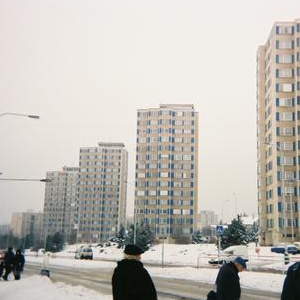Europe
Treaty on the Final Settlement with Respect to Germany
At the end of World War II, Germany was divided into four zones of occupation, with each being overseen by one of the Allied powers: the U.S., Great Britain, France, and the Soviet Union.
Rude Pravo, Central Committee Meeting
In 1978, one year after the creation of Charter '77, Vaclav Havel wrote his famous essay, "The Power of the Powerless." In it he argued that the countries of the East Bloc were under the rule of post-totalitarian regimes that appealed to popular desires for consumer goods, in order to secure domi
Samizdat, Air Pollution
Pollution from the Black Triangle was a tremendous source of water and air pollution in Eastern Europe, but it was not the only source.
Rude Pravo, Water Pollution
Nestled in the very heart of Central Europe is a region that has come to be known as the Black Triangle. It contains land surrounding where the borders of Czechoslovakia, Poland, and East Germany meet.
Prace, Health
Following World War II, the peoples of Eastern Europe not only had increased access to affordable, hygienic housing, they also had improved access to health care.
Rudé Pravo Alcohol and Cigarette Abuse
Alcohol and cigarette consumption were very regular parts of everyday life for great numbers of Eastern Europeans, including youth, during the Cold War era. In fact, these countries had some of the highest alcoholism rates in the world and a very large percentage of the population smoked.
Rudé Pravo, Music
The history of music, including rock, punk and heavy metal, forms a fascinating chapter in the history of everyday life in Cold War Eastern Europe.
Rudé Pravo, Youth Discontent
In Communist Eastern Europe much propaganda was directed toward young people, who party leaders correctly viewed as forces important for the future of the state.
Samizdat, Houses of Culture and Entertainment
During the Cold War era an interesting public space called "the house of culture" (or sometimes "the palace of culture") proliferated throughout the East Bloc.

Panelaks and Housing Estates
During the first half of the 20th century shortages of hygienic, affordable housing were common in Eastern Europe.